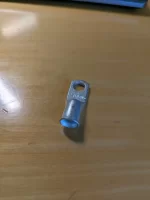I officially think this LCHCS is defective. I have asked for my money back, but Lucid is ignoring me.
I bought a IR thermometer to test the connections. After 2.5 hours at 12A, both connectors actually dropped in temperature (the ambient temperature also went down, so it makes sense). One connector dropped from 74.1 deg to 72.7 degrees. The other one dropped from 74.8 deg to 73.5 deg. (Those are at the EVSE -- I didn't take the temp at the breaker as I can touch it when it is live. It feels cool to the touch before and after).
Not sure what to do. I'm a bit pissed off.


